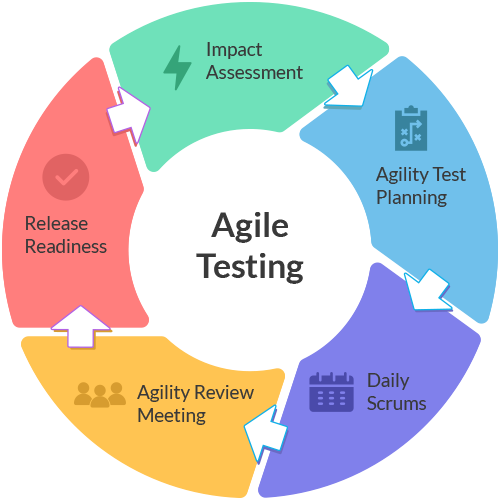Table of contents
Testing activities in Agile development
Agile testing is an essential component of agile software development methodology. Agile development methodologies prioritize customer satisfaction and aim to deliver working software frequently and iteratively. This means that testing and quality assurance activities should be an integral part of every iteration, ensuring that the product is of high quality and meets customer requirements. Agile testing activities involve continuous testing, feedback, and improvement throughout the entire software development lifecycle.

Agile development methodology emphasizes the importance of collaboration, and the entire project team participates in all activities. Testing activities in agile are not confined to a dedicated testing team, but rather involve everyone in the development team, including developers, testers, and product owners. Agile testing activities are performed iteratively, in parallel with development activities, to ensure that each increment of the product is of high quality and meets the customer’s requirements.
The testing team participates in the iteration planning meeting, where the team estimates the testing tasks required for each user story or feature. The team then writes test cases using the feature descriptions, which serve as a guide for the testing team during the testing process. The team also participates in daily stand-up meetings to discuss the progress of testing activities.
Activities
Release Planning (Test Plan)
The first step in agile testing is release planning, which involves creating a test plan for each iteration. The test plan outlines the testing objectives, scope, and activities to be carried out in the iteration. The testing team collaborates with the development team and product owners to identify the user stories and features that will be delivered in the iteration. Based on this information, the testing team can identify the test cases that need to be executed and the testing resources required.
Unit Testing
Unit testing is a testing activity that is performed by developers. It involves testing individual units of code to ensure that they function correctly. Unit testing is an essential component of agile development methodology, as it helps identify defects early in the development process. The testing team may also participate in unit testing, providing feedback to developers and identifying defects that need to be fixed.
Integration Testing
Integration testing involves testing the integration between different modules or components of the software system. Integration testing is performed to ensure that the individual components of the system work together correctly. The testing team participates in integration testing activities, identifying defects and providing feedback to the development team.
Feature Testing
Feature testing involves testing the functionality of each feature or user story to ensure that it meets the customer’s requirements. The testing team writes test cases based on the feature descriptions and executes them to verify that the feature works as expected. Any defects identified during feature testing are reported to the development team for resolution.
Defect Fixing
Defect fixing involves identifying and fixing defects that have been identified during testing activities. The testing team reports defects to the development team, who then fix them and retest to ensure that the defects have been resolved.
Acceptance Testing
Acceptance testing is the final stage of testing and involves testing the software system as a whole to ensure that it meets the customer’s requirements. Acceptance testing is performed by the customer or end-users, who use the software system to verify that it meets their requirements. The testing team may also participate in acceptance testing activities, providing support to the customer and identifying defects that need to be resolved.
Status Reporting on Progress of Testing
The testing team provides regular status reports on the progress of testing activities to the development team and product owners. The status reports provide information on the number of test cases executed, the number of defects identified, and the progress towards achieving the testing objectives.
Defect Tracking
Defect tracking is an essential component of agile testing activities. The testing team tracks defects using a defect tracking tool, which allows defects to be logged, prioritized, and tracked through to resolution. Defect tracking helps ensure that
Summary
Agile testing is an iterative development methodology that emphasizes collaboration between the entire project team and focuses on customer satisfaction by delivering working software frequently and iteratively. The article describes the various agile testing activities at the project level, including release planning, regression testing, and release activities. The article also outlines the agile testing activities that occur during an iteration, such as participating in iteration planning, estimating tasks from a testing perspective, writing test cases, unit testing, integration testing, feature testing, defect fixing, acceptance testing, status reporting, and defect tracking. By performing these activities iteratively and in parallel with development activities, the testing team can ensure that each increment of the product is of high quality and meets the customer’s requirements.
About AgileTest app
AgileTest is a comprehensive testing app designed to support agile testing activities. It provides a range of features and tools to support testing activities, including test case management, defect tracking, test automation, and reporting. By using AgileTest, testing teams can ensure that each increment of the product is of high quality and meets the customer’s requirements.



